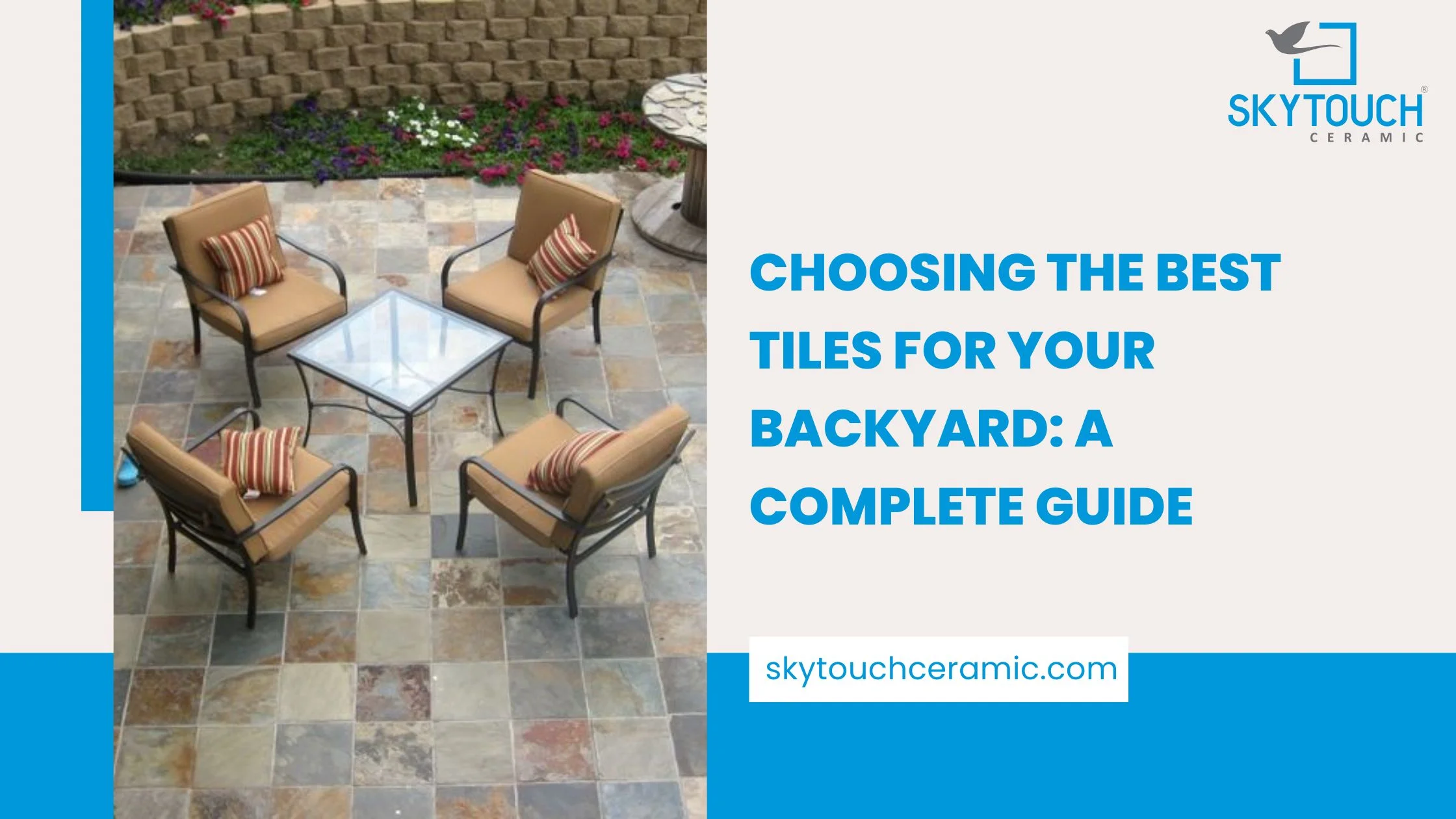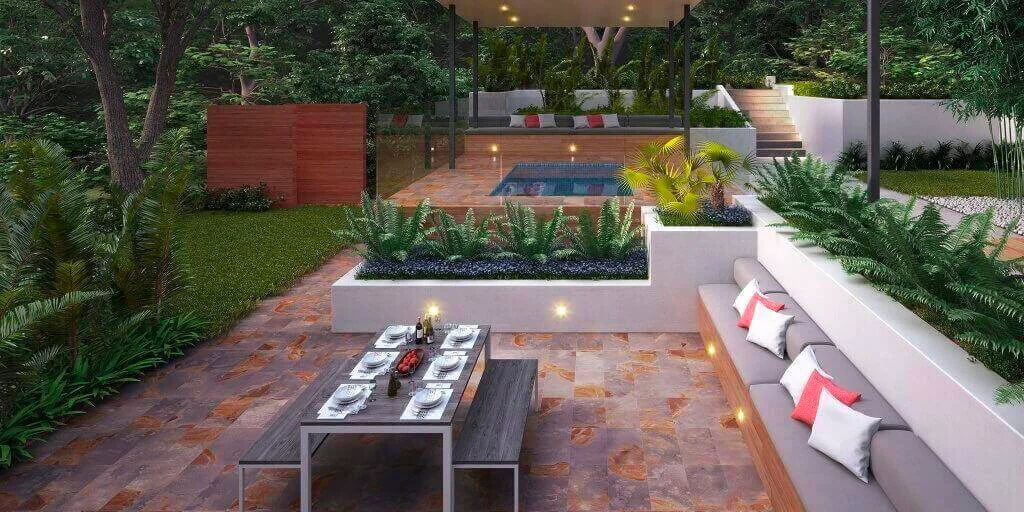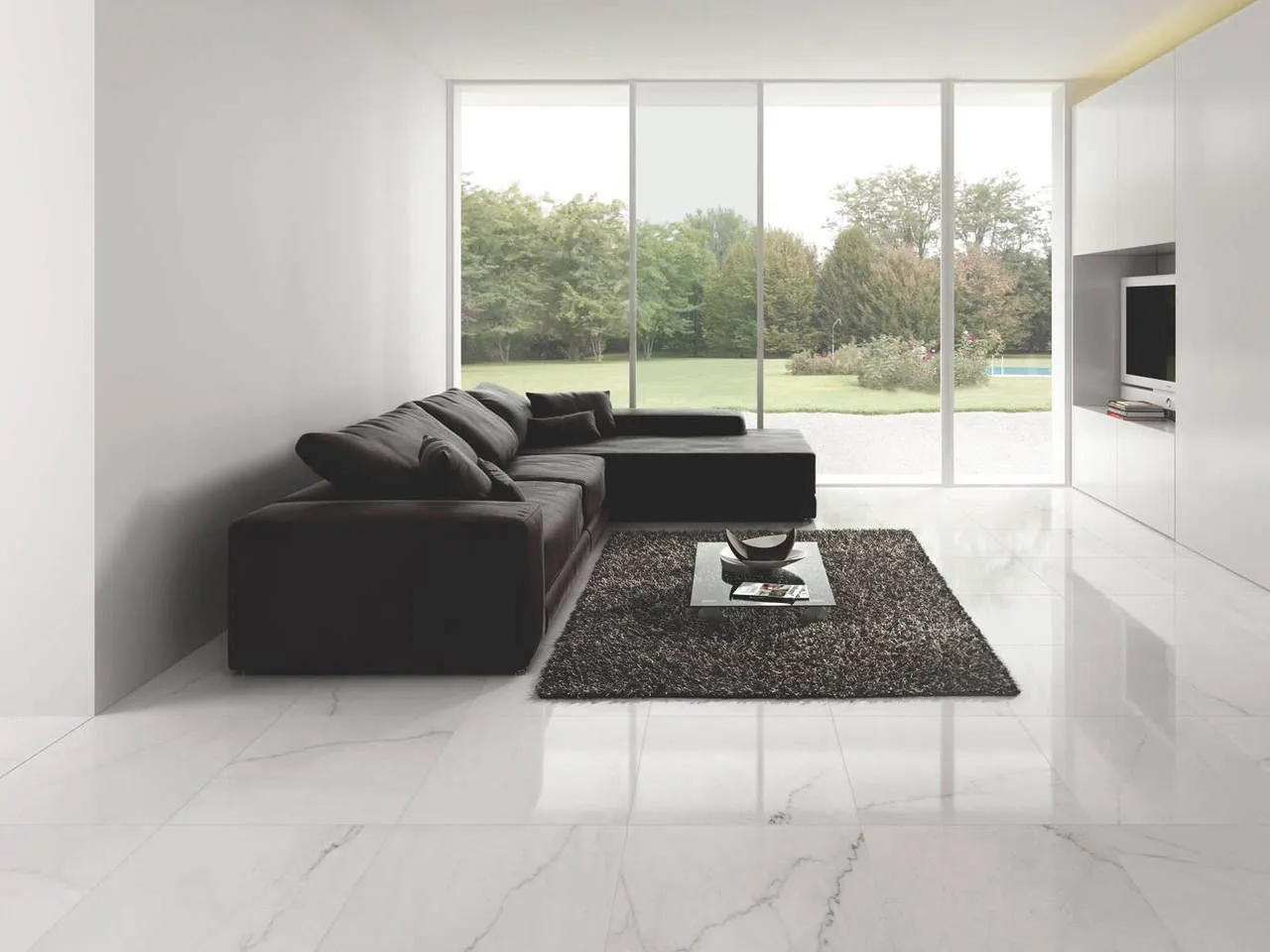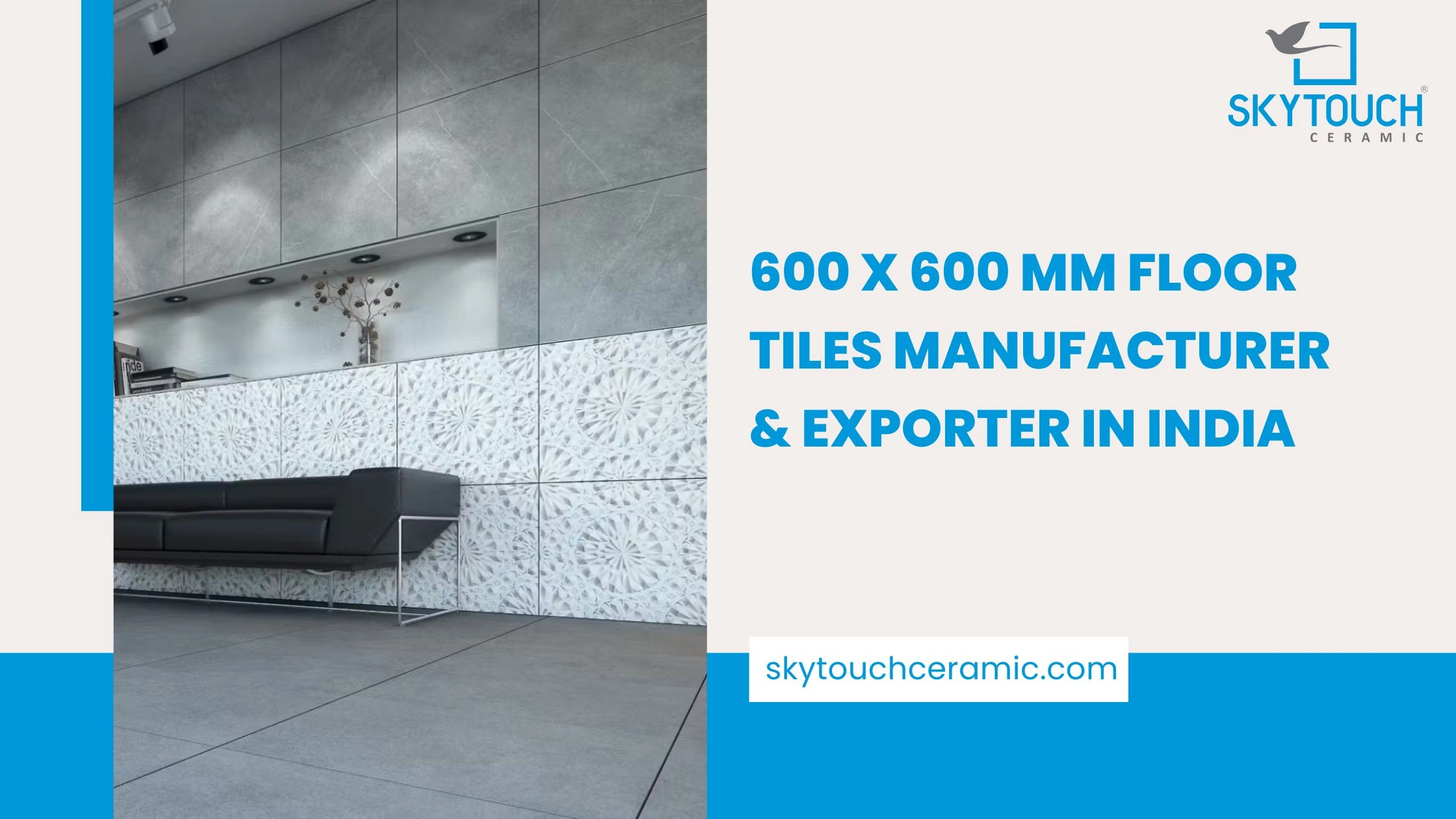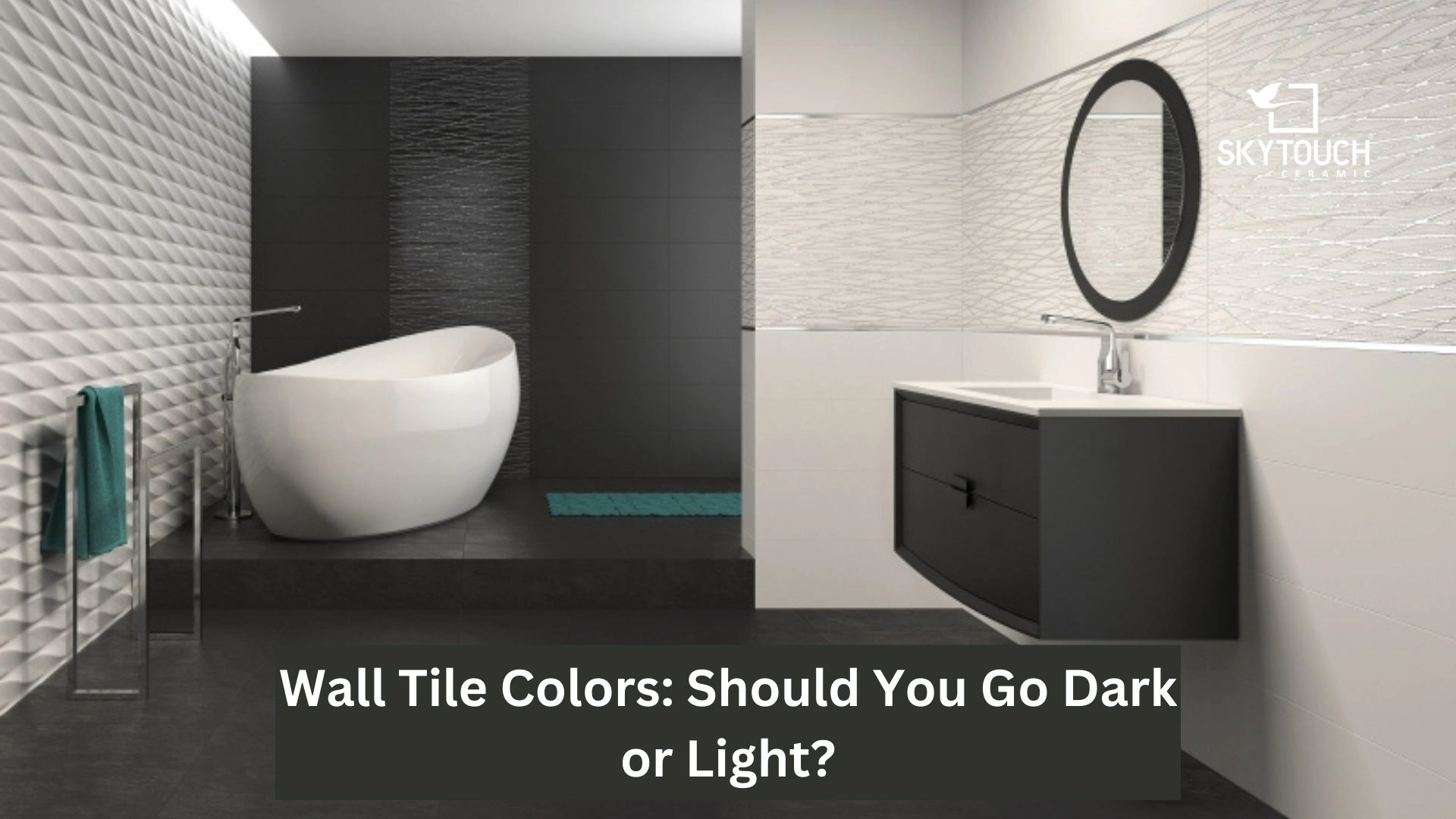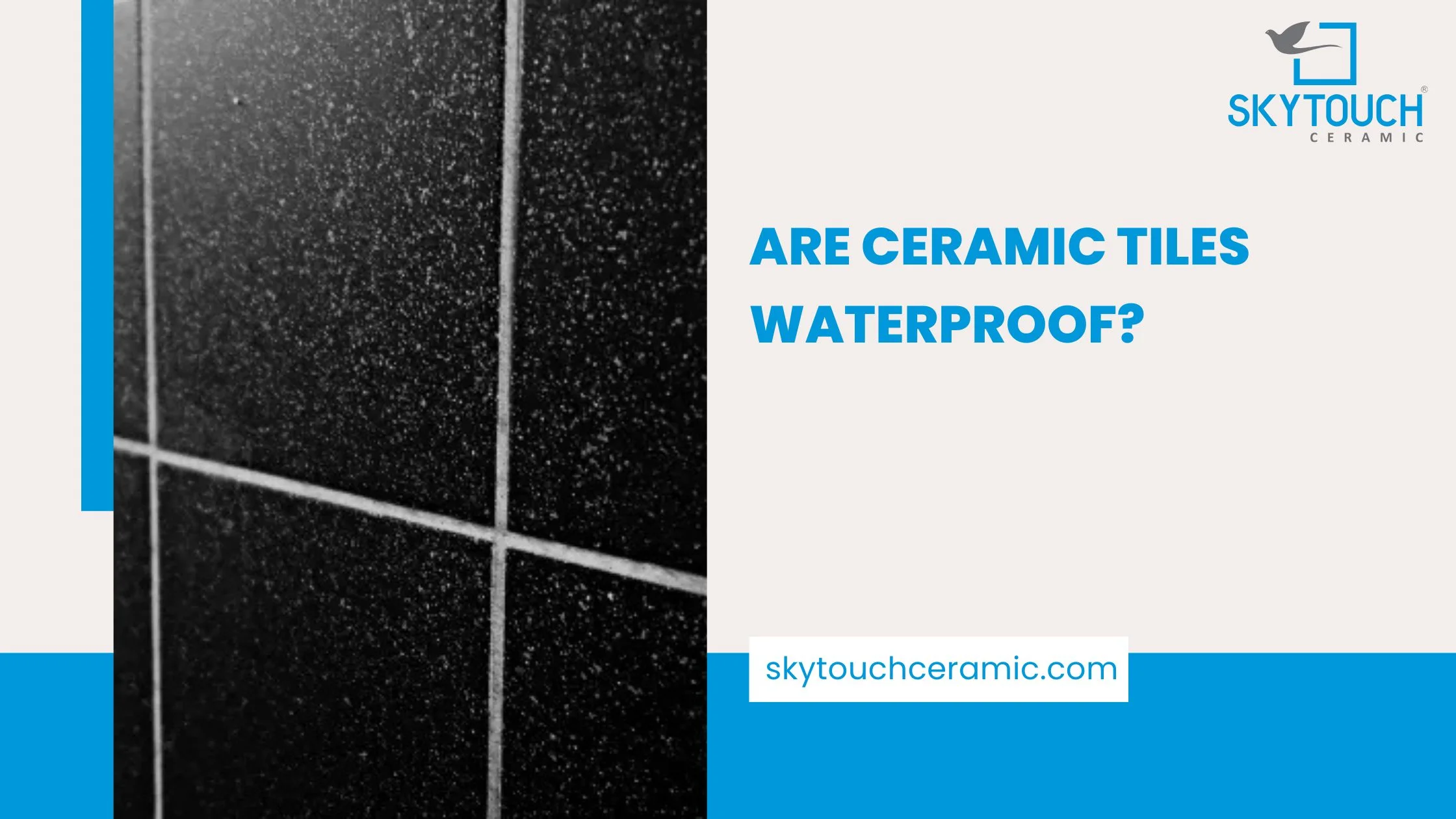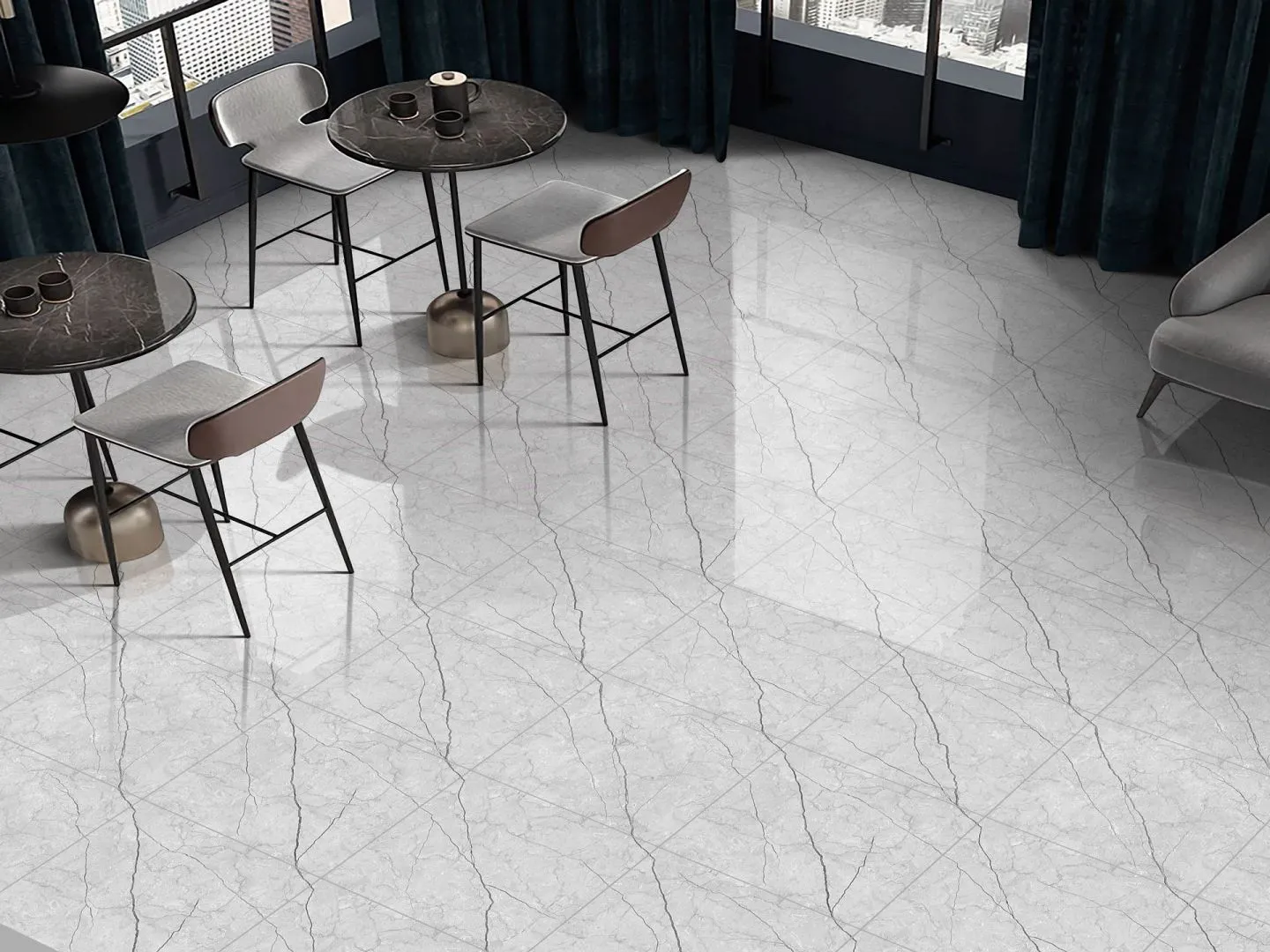One of the most fulfilling home improvement projects that one can undertake is to design ones backyard. When designing an outdoor living area, seating area, pool area or a garden path, choice of tiles can enhance the appearance as well as exercise the purposes it is supposed to serve. But with these many choices, how do you make a decision and select the right tiles for your backyard?
In this complete guide to outdoor tiles, we will highlight some of the important things to consider when choosing different categories of the tiling, and make recommendations to clients with a view of assisting them in choosing the most appropriate type for their backyard.
1. Understand Your Backyard’s Needs
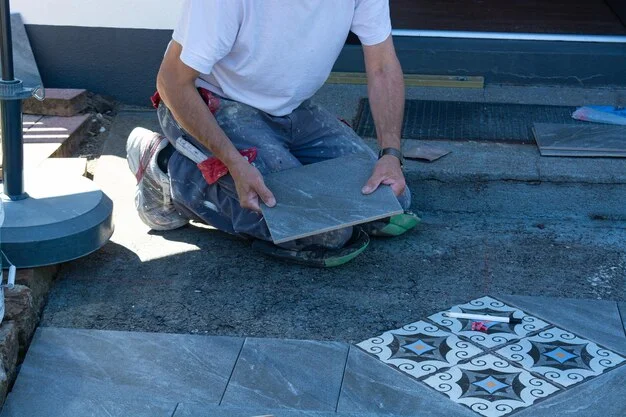
Before diving into tile types and designs, consider the specific needs of your outdoor space:
• Location: Are you tiling around the pool, in a dining area, or along a pathway? Different locations may require different types of tiles.
• Traffic: High-traffic areas, such as patios and walkways, need durable tiles that can withstand wear and tear. Lower-traffic areas like garden borders can accommodate more delicate tiles.
• Climate: Your local climate plays a significant role in tile selection. Extreme weather conditions, like heavy rain, frost, or intense heat, should guide your choice of materials that can withstand these elements.
2. Choose the Right Material
This complete guide to outdoor tiles shall outline some of these factors, the various categories of the tiling, as well as give recommendations to the clients as a way of helping them choose the right type of outdoor tiling for their backyard. Here’s a breakdown of the most popular options:
• Porcelain Tiles
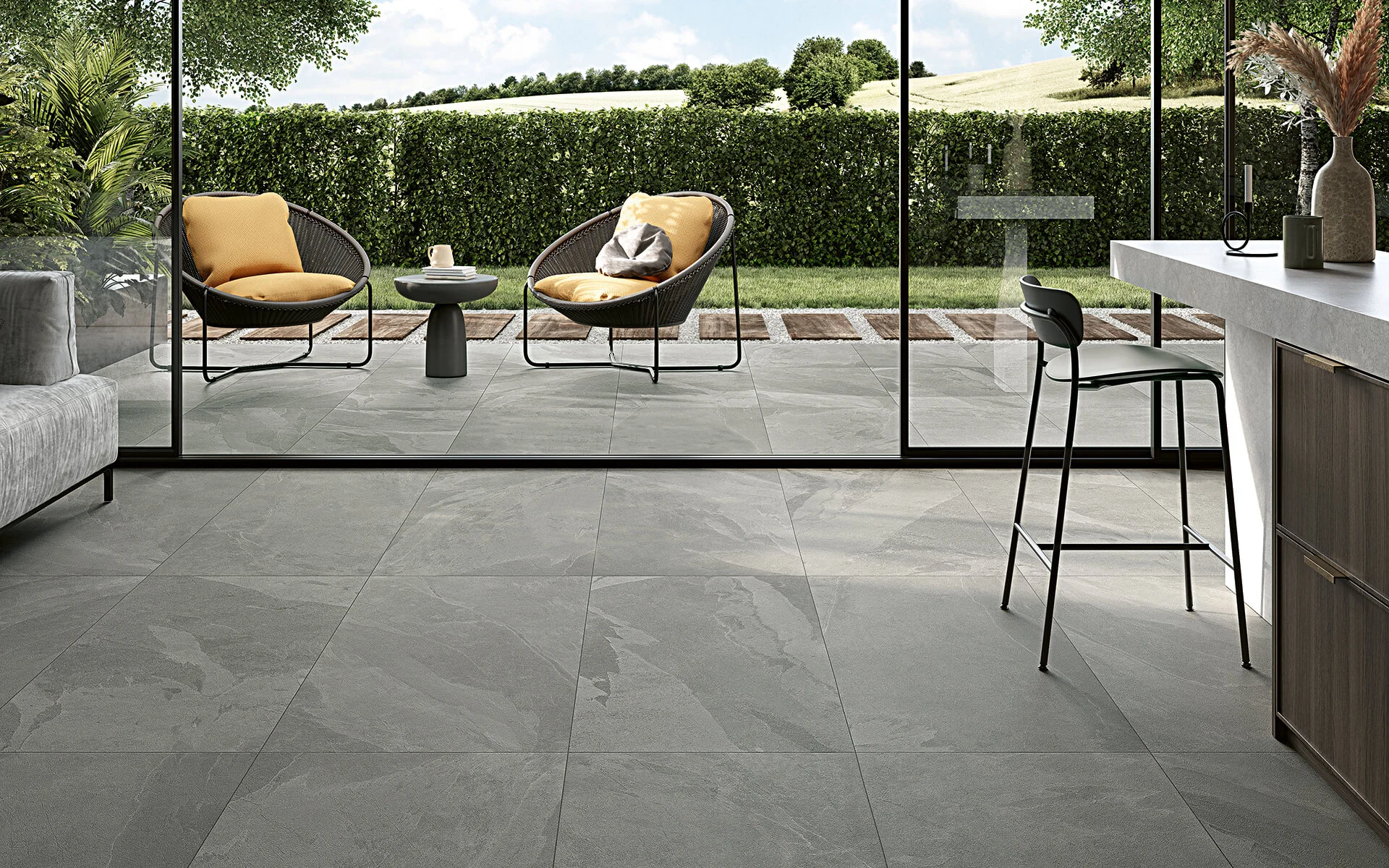
Another very satisfying self build home improvement project that a person can embark on is coming up with their own backyard. When incorporating tiles in outdoor living space, seating areas, near a swimming pool or even a garden trail, the options mentioned above shall improve the aesthetic value of the area besides exercising the functionality for which it has been designed. But with these many options then how does one go ahead and make a choice and get the right tiles for the backyard?
Pros:
• Non-porous, resistant to water and stains
• Low maintenance
• Available in many colors and patterns
Cons:
• Can be slippery when wet (opt for textured finishes)
• Requires professional installation for best results
• Ceramic Tiles
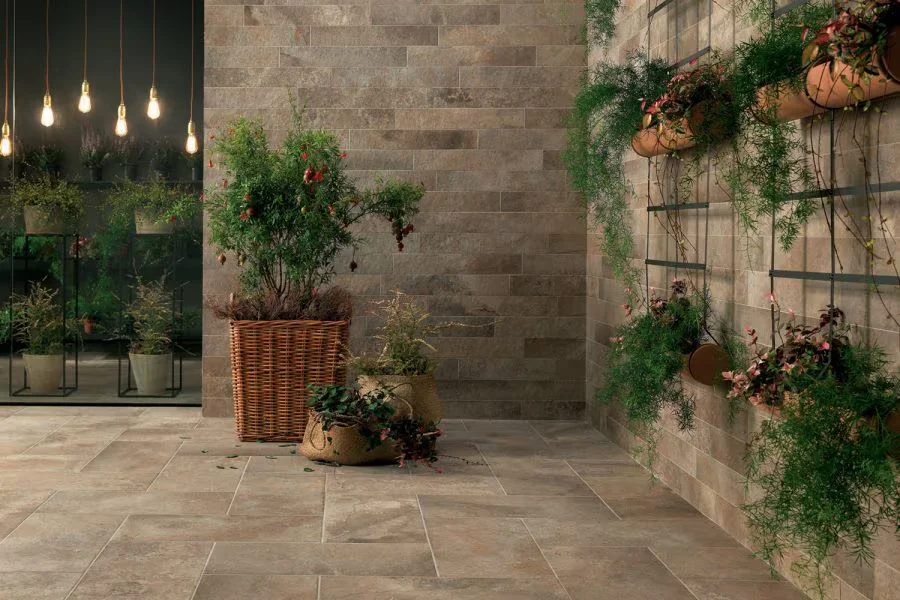
Ceramic tiles are also used frequently as an outdoor material. They are often colored like porcelain but can be a little cheaper than it. Ceramic tiles used for areas that have comparatively less exposure to the outside environment or for screened patios.
Pros:
• Budget-friendly
• Available in various colors and patterns
Cons:
• Less durable than porcelain
• May be more prone to cracking under extreme weather conditions
• R11 Porcelain Tiles
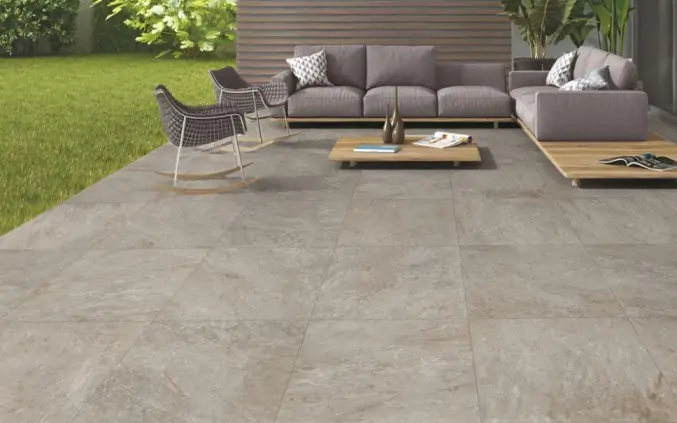
If you are in need of a quality interlocking tile for industrial purposes which provides very good slip coefficient, then R11 porcelain tiles should be used. R11 means the slip resistance of the particular tile, and R11 is a higher resistance for areas that get wet mostly. Since it forms a protection barrier against rain or moisture, these tiles can be used around pools, on patios, or anywhere in the backyard. They have a prickly surface hence offering better grip and not slippery as a standard cover.
Pros:
• High slip resistance, making them ideal for wet or poolside areas
• Durable, resistant to stains and moisture
• Available in a variety of designs, colors, and finishes
Cons:
• R11 tiles may feel rough underfoot compared to smoother porcelain finishes
• Slightly more expensive due to their slip-resistant properties
• Porcelain Slabs
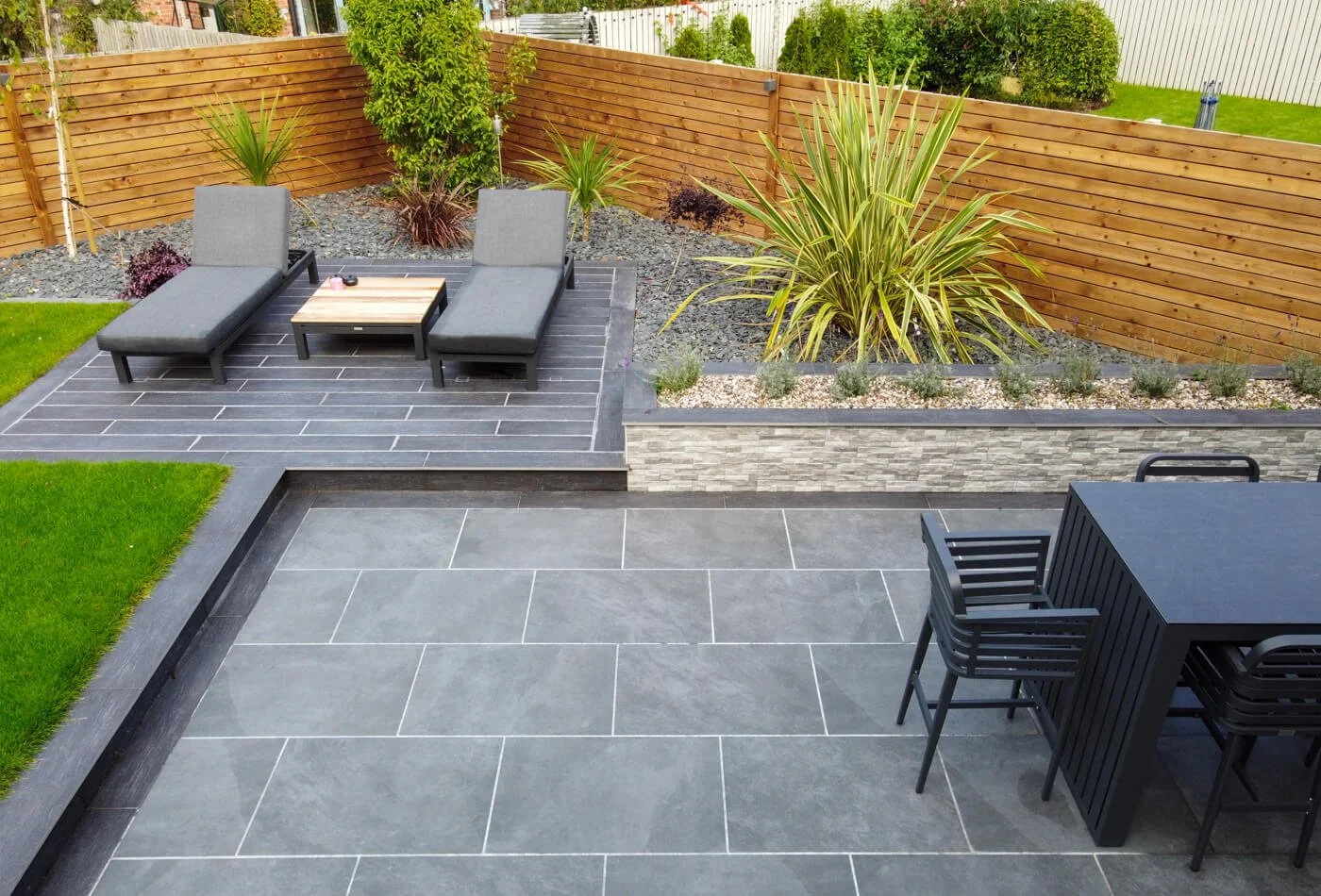
Porcelain slabs are a large format tile, indeed they are larger versions of porcelain tiles, the material used to make them is the same as that used to make standard porcelain tiles. These slabs are perfect to provide the feature of modern appearance in outdoor areas including large patios or proximity to swimming pools. They are large and that minimizes the grout lines so produce a beautiful, smooth look to the floor.
Pros:
• Large format creates a contemporary, sleek appearance
• Durable, resistant to stains, and easy to clean
• Available in a wide range of colors and textures
Cons:
• Heavy and may require professional installation
• Expensive compared to other tile materials
• Clay Tiles (Terracotta)
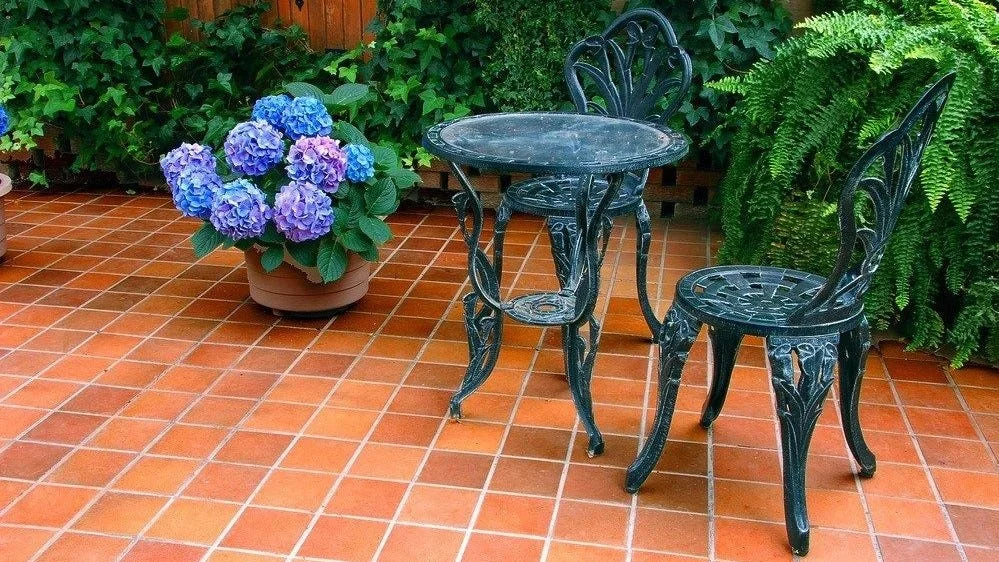
Outdoor areas are comfortable with terracotta tiles owing to their warm feeling and traditional appeal. For patios, and walkways, their natural earthy color and mediterranean charisma appeals to many homeowners. Clay tiles are permeable and one needs to apply a sealer to avoid the tiles penetrating by water.
Pros:
• Beautiful rustic look
• Affordable compared to other materials
Cons:
• Porous, requiring sealing to prevent water damage
• Less durable than porcelain or full-body tiles
3. Consider the Tile Finish
The final appearance of the tiles will determine the general outlook of your outdoor area as well as their usage. Here are some finish options:
• Matt Finish: Matt has an antislip finish which makes it easy to apply when designing pool areas as well as the outside patios as it does not reflect light making it easier to get a grip on the floor surface.
• Glossy Finish: Flooring can be shiny giving a luxurious look due to the use of glossy tiles. But they may be a little slippery when they are wet, thus should not be used in places with much water contact such as around the swimming pool.
• Textured Finish: Tiles have also carried a rough surface so that it becomes easy to get a proper grip, especially for outdoor pathways or pool areas.
4. Slip Resistance is Key
Security should always be at the back of your mind when selecting tiles for the backyard. Outdoor surfaces, particularly those that are exposed to water such as areas around swimming pools or fountains become slippery. Such tiles are textured or slip-resistant in as much as they can be a causality of an accident. Obtain anti-slip rated tiles since this ones have a performance rate in wet conditions.
5. Size and Layout
Positioning and size of your tiles can really make a huge difference in the way your backyard looks like. Consider the following:
• Large Tiles: Big tiles look beautiful, and they are suitable for modern design and outdoor areas if your yard is relatively big. They decrease the patterns of the grout lines in the floor making it look sleek and clean.
• Small Tiles: If you prefer small tiles like a mosaic, these can give character to your interiors while they can be used to create designs. They are suitable for use in small sections of a building or for separate accents.
• Grout Lines: The color and width of grout lines are likely to impact the overall appearance of the space in one way or the other. The chosen grout should be of a similar shade to the tiles and of the same size as the tiles will appear smaller on arrangement.
6. Color and Design
The right tile color and design are very important in the kind of atmosphere you want to manifest in your backyard. Color such as beige, white and soft vs pastel colors will give a very light look , on the other hand colors such as gray and charcoal will give a very dramatic and elegant look. It’s essential to take into account the colors of the furniture you have placed outside such as chairs and tables, the plants around the compound and many other features.
If you want to make more graphic statements, you will choose pattern or texture of the tiles such as Moroccan or geometric designs.
7. Durability and Maintenance
Outdoor tiles should be designed to be durable and have to be able to resist water especially rain, and the UV radiation as well as sharp changes in temperature. See the PEI number stamped at the back of your tiles or refer to the PEI table provided in this article. A higher PEI rating examines greater sturdiness, which would locate the paving appropriate to regions experiencing much foot Website traffic outdoors.
Also, certain choices like natural stone will need to be sealed periodically to stop them from being stained, whereas porcelain and ceramic tiles are relatively easy to care for.
8. Budget and Installation
In addition, take into consideration your state of affairs regarding money needed for the purchase, as well as organizational conditions of installing the equipment. As much as natural stone and designer tiles are costly, porcelain or ceramic are cheaper. If you are confined to a very low budget then you can opt for concrete roof tiles or porcelain tiles that mimic the look of stones.
Consider the cost of installation because, although some tiles can be installed by a DIY enthusiast, some of the tiles may need professional treatment, particularly if they are big or cumbersome. More to it, your backyard tiles will serve to improve the outlook of your home for the next few years.
Case Study: Contemporary Patio Design with Porcelain Slabs
Project Overview
The family in Miami wanted to redesign the backyard and implemented a modern space for parties and family dinner – an outdoor patio. The aim was to create a very clean, exceptionally stylish piece of furniture that fitted the architectural design of their contemporary home.
Solution
The family also opted for large format porcelain slabs for the area which would be used as a patio. These slabs were fitted because they are large and the clients were able to achieve a smooth, continuous look that looks modern and opulent. Preferably the porcelain slabs were chosen in subtle off-white color and have a polished stone look to give the convenience a natural touch of class.
Outcome
Large porcelain tiles made a world of difference to the patio; before it was small and cramped, but specialised tiles rendered it more open and welcoming. Choosing tile with very little grout line supported the modern perception of the space’s design; porcelain is a very robust material that endures both heat and humidity well, so the areas where clients might choose to host a meal or entertain friends at a barbecue perhaps would not be affected by Miami’s scorching heat, and perhaps occasional showers. At the moment, the family is able to entertain a large number of people, thus the patio forms the center point of the house.
Conclusion
In choosing the best tiles for the backyard, one must know about the requirements of the area, the type of material, finish on, slip-resistant property, and its design. From minimally stylish outside eating area to a countrified backyard sidewalk, tiles crafted well can make your outdoor space beautiful as well as usable. If well maintained and cared for, your backyard tiles will of course play an epitome of your home beauty for years to come. Looking for the best outdoor tiles, Skytouch Ceramic the leading tile manufacturing company and exporter various types of tiles decisions that can be used in your backyard designs. They should be your source of supply if you want a beautiful and durable outdoor area.

